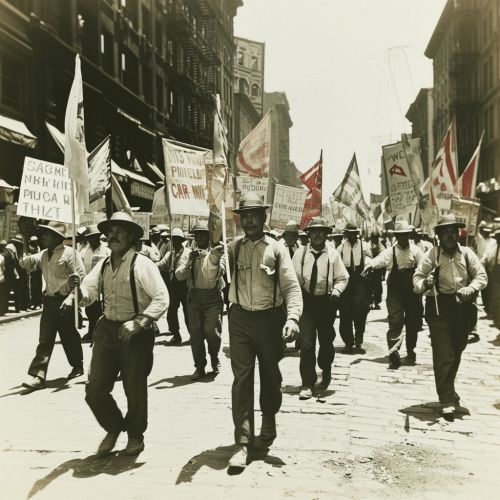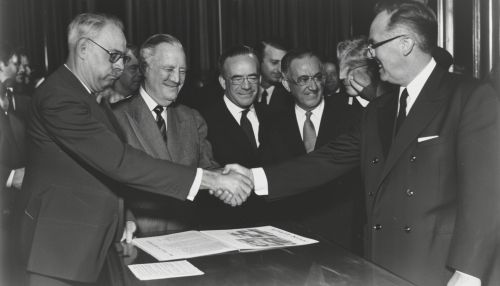American Federation of Labor
Origins and Formation
The American Federation of Labor (AFL) was a national federation of labor unions in the United States. It was founded in Columbus, Ohio, in December 1886 by an alliance of craft unions disaffected from the Knights of Labor, a national labor union. The AFL was the largest union grouping in the United States for the first half of the 20th century, even after the creation of the Congress of Industrial Organizations (CIO) by unions that left the AFL in 1935 over its opposition to organizing mass production industries.


Structure and Governance
The AFL was a federation of different local unions, each of which was based on craft specialization and maintained substantial autonomy. The AFL's member unions were divided into 25 national and international unions, each of which had jurisdiction over a specific craft or trade. The AFL's structure emphasized the autonomy of its member unions, with the federation's role primarily being to coordinate their activities and to assist in disputes with employers. The AFL's governance structure consisted of an executive council, which included the presidents of the member unions, and a president, who was elected by the council.
Policies and Strategies
The AFL's policies and strategies were characterized by what has been called "business unionism". This approach focused on achieving concrete economic benefits for its members through collective bargaining and strike action, rather than pursuing broader social or political goals. The AFL also advocated for the closed shop, in which only union members could be hired for certain jobs, as a way to strengthen its bargaining position with employers.
Impact and Legacy
The AFL played a major role in the labor movement in the United States, particularly in the first half of the 20th century. Its focus on skilled workers and craft unionism, as well as its strategy of business unionism, had a significant impact on the shape of the labor movement. The AFL's legacy is also evident in its successor, the AFL-CIO, which continues to be a major force in American labor.


Criticisms and Controversies
The AFL faced criticism and controversy throughout its history. Some critics argued that its focus on skilled workers and craft unionism excluded unskilled workers and contributed to divisions within the labor movement. The AFL was also criticized for its lack of diversity, particularly its failure to adequately represent women and minorities. The AFL's opposition to the organization of mass production industries led to a split in the labor movement and the creation of the CIO in 1935.
Merger with the CIO
In 1955, the AFL merged with the CIO to form the AFL-CIO, a federation of unions that continues to represent millions of workers in the United States. The merger marked the end of a long-standing rivalry between the two organizations and represented a significant consolidation of the labor movement in the United States.


